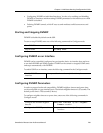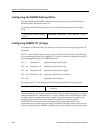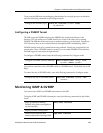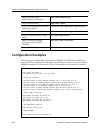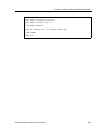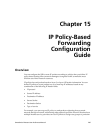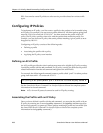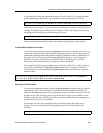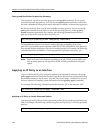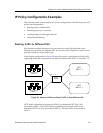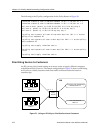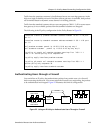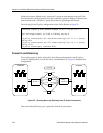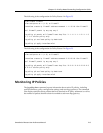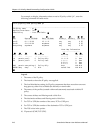
SmartSwitch Router User Reference Manual 209
Chapter 15: IP Policy-Based Forwarding Configuration Guide
For example, the following command creates an IP policy called “p1” and specifies that
packets matching profile “prof1” are forwarded to next-hop gateway 10.10.10.10:
You can also set up a policy to prevent packets from being forwarded by an IP policy. For
example, the following command creates an IP policy called “p2” that prevents packets
matching prof1 from being forwarded using an IP policy:
Packets matching the specified profile are forwarded using dynamic routes instead.
Creating Multi-Statement IP Policies
An IP policy can contain more than one ip-policy statement. For example, an IP policy can
contain one statement that sends all packets matching a profile to one next-hop gateway,
and another statement that sends packets matching a different profile to a different next-
hop gateway. If an IP policy has multiple ip-policy statements, you can assign each
statement a sequence number that controls the order in which they are evaluated.
Statements are evaluated from lowest sequence number to highest.
For example, the following commands create an IP policy called “p3”, which consists of
two IP policy statements. The ip policy permit statement has a sequence number of 1,
which means it is evaluated before the ip policy deny statement, which has a sequence
number of 900.
Setting the IP Policy Action
You can use the action parameter with the ip-policy permit command to specify when to
apply the IP policy route with respect to dynamic or statically configured routes. The
options of the action parameter can cause packets to use the IP policy route first, then the
dynamic route if the next-hop gateway specified in the IP policy is unavailable; use the
dynamic route first, then the IP policy route; or drop the packets if the next-hop gateway
specified in the IP policy is unavailable.
For example, the following command causes packets that match the profile to use
dynamic routes first and use the IP policy gateway only if a dynamic route is not
available:
ssr(config)# ip-policy p1 permit acl prof1 next-hop-list 10.10.10.10
ssr(config)# ip-policy p2 deny acl prof1
ssr(config)# ip-policy p3 permit acl prof1 next-hop-list 10.10.10.10 sequence 1
ssr(config)# ip-policy p3 deny acl prof2 sequence 900
ssr(config)# ip-policy p2 permit acl prof1 action policy-last



